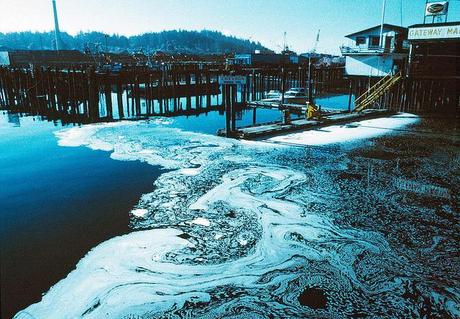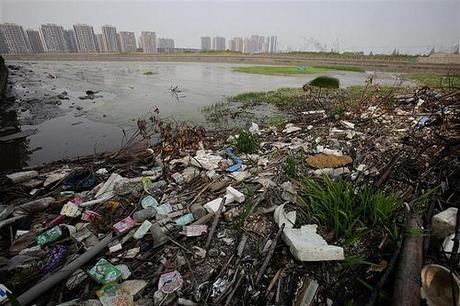What is Thermal Pollution?
When someone thinks of pollution, the idea of thermal pollution often doesn’t come to mind. People will first think of things like carbon emissions, personal pollution and waste, and a variety of other changing factors. However, thermal pollution is a real and persistent problem in our modern society. In layman’s terms, thermal pollution is when an industry or other human-made organization takes in water from a natural source and either cools it down or heats it up. They then eject that water back into the natural resource, which changes the oxygen levels and can have disastrous effects on local ecosystems and communities.
Thermal pollution is defined as sudden increase or decrease in temperature of a natural body of water which may be ocean, lake, river or pond by human influence. This normally occurs when a plant or facility takes in water from a natural resource and puts it back with an altered temperature. Usually, these facilities use it as a cooling method for their machinery or to help better produce their products.

Plants that produce different products or waste water facilities are often the culprits of this massive exodus of thermal pollution. In order to properly control and maintain thermal pollution, humans and governments have been taking many steps to effectively manage how plants are able to use the water. However, the effects are still lasting today.
Causes of Thermal Pollution
1. Water as Cooling Agent in Power, Manufacturing and Industrial plants: Production and Manufacturing plants are biggest source of thermal pollution. These plants draw water from nearby source to keep machines cool and then release back to the source with higher temperature. When heated water returns to the river or ocean, the water temperature rises sharply. When oxygen levels are altered in the water, this can also degrade the quality and longevity of life in wildlife that lives underwater. This process can also wipe away streamside vegetation, which constantly depends on constant levels of oxygen and temperature. By altering these natural environments, industries are essentially helping decrease the quality of life for these marines based life forms and can ultimately destroy habitats if they are not controlled and careful about their practices.
2. Soil Erosion: Soil erosion is another major factor that causes thermal pollution. Consistent soil erosion causes water bodies to rise, making them more exposed to sunlight. The high temperature could prove fatal for aquatic biomes as it may give rise to anaerobic conditions.
3. Deforestation: Trees and plants prevent sunlight from falling directly on lakes, ponds or rivers. When deforestation takes place, these water bodies are directly exposed to sunlight, thus absorbing more heat and raising its temperature. Deforestation is also a main cause of the higher concentrations of greenhouse gases i.e. global warming in the atmosphere.
4. Runoff from Paved Surfaces: Urban runoff discharged to surface waters from paved surfaces like roads and parking lots can make water warmer. During summer seasons, the pavement gets quite hot, which creates warm runoff that gets into the sewer systems and water bodies.
5. Natural Causes: Natural causes like volcanoes and geothermal activity under the oceans and seas can trigger warm lava to raise the temperature of water bodies. Lightening can also introduce massive amount of heat into the oceans. This means that the overall temperature of the water source will rise, having significant impacts on the environment.

Effects of Thermal Pollution
Among recognized scientists and scholars, there are generally two schools of thought when it comes to the effects of thermal pollution. Some lean on the side of the negatives of this pollution on marine ecosystems and how it is detrimental to positive environmental practices. However, some lean towards the side that without these industries operating the way they do, then some of the most basic parts of human life would be completely obsolete. Waste water would not be able to be properly maintained, we would have no industries that could produce the goods we need, and so on. The effects of thermal pollution on ecosystems, however, greatly outweigh the benefits that industries have by participating in the act.
1. Decrease in DO (Dissolved Oxygen) Levels: The warm temperature reduces the levels of DO (Dissolved Oxygen) in water. The warm water holds relatively less oxygen than cold water. The decrease in DO can create suffocation for plants and animals such as fish, amphibians and copepods, which may give rise to anaerobic conditions. Warmer water allows algae to flourish on surface of water and over the long term growing algae can decrease oxygen levels in the water.
2. Increase in Toxins: With the constant flow of high temperature discharge from industries, there is a huge increase in toxins that are being regurgitated into the natural body of water. These toxins may contain chemicals or radiation that may have harsh impact on the local ecology and make them susceptible to various diseases.
3. Loss of Biodiversity: A dent in the biological activity in the water may cause significant loss of biodiversity. Changes in the environment may cause certain species of organisms to shift their base to some other place while their could be significant number of species that may shift in because of warmer waters. Organisms that can adapt easily may have an advantage over organisms that are not used to the warmer temperatures.
4. Ecological Impact: A sudden thermal shock can result in mass killings of fish, insects, plants or amphibians. Hotter water may prove favorable for some species while it could be lethal for other species. Small water temperature increases the level of activity while higher temperature decreases the level of activity. Many aquatic species are sensitive to small temperature changes such as one degree Celsius that can cause significant changes in organism metabolism and other adverse cellular biology effects.
5. Affects Reproductive Systems: A significant halt in the reproduction of marine wildlife (although this may be true, reproduction can still occur between fish – but the likelihood of defects in newborns is significantly higher) can happen due to increasing temperatures as reproduction can happen with in certain range of temperature. Excessive temperature can cause the release of immature eggs or can prevent normal development of certain eggs.
6. Increases Metabolic Rate: Thermal pollution increases the metabolic rate of organisms as increasing enzyme activity occurs that causes organisms to consume more food than what is normally required, if their environment were not changed. It disrupts the stability of food chain and alter the balance of species composition.
7. Migration: The warm water can also cause particular species of organisms to migrate to suitable environment that would cater to its requirements for survival. This can result in loss for those species that depend on them for their daily food as their food chain is interrupted.
Above all else, the most important thing to consider is that the effects of thermal pollution greatly outweighs the human need for it to be done. Plants and industries have been able to find successful ways around thermal pollution, but many of them are not practicing it because it’s simply easier to work from the traditional model. If we want to promote the thriving environment that surrounds marine biology, then the attitude around thermal pollution needs to take a drastic turn. By being aware of the causes and effects, you can have a significant impact on how these plants choose to operate and you can opt to make change.

